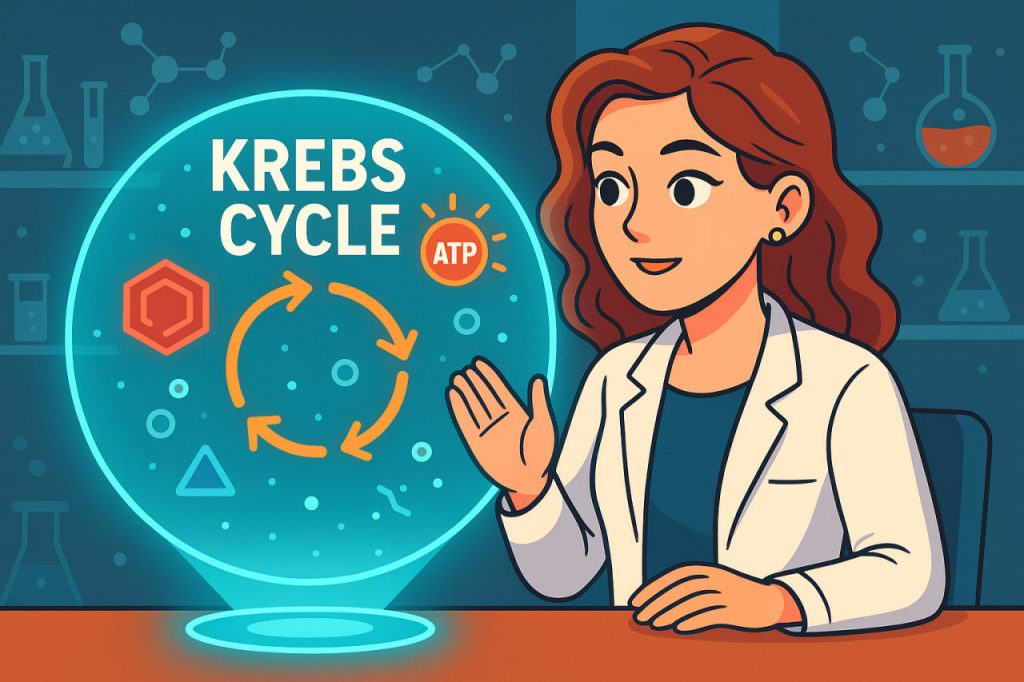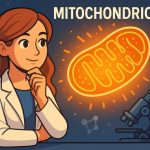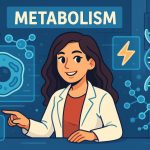The Krebs Cycle, also known as the citric acid cycle or tricarboxylic acid (TCA) cycle, is one of the most important biochemical pathways in all living organisms. It lies at the heart of metabolism, converting nutrients into usable energy that powers every cellular process. This intricate sequence of chemical reactions takes place inside the mitochondria, often referred to as the “powerhouse of the cell.” Understanding the Krebs Cycle offers a window into how life transforms food into energy, sustains biological functions, and maintains balance at the molecular level.
The Discovery and Importance of the Krebs Cycle
The cycle was first described in 1937 by German-British biochemist Hans Adolf Krebs, who received the Nobel Prize in Physiology or Medicine in 1953 for his groundbreaking work. His discovery explained how cells systematically extract energy from carbohydrates, fats, and proteins through a series of enzyme-catalyzed reactions. Before Krebs’ work, scientists understood that food provided energy but lacked a full picture of how this transformation occurred at the cellular level. The cycle became a cornerstone of modern biochemistry and remains a central concept in biology and medicine today.
How the Krebs Cycle Works
The Krebs Cycle is part of aerobic respiration, meaning it requires oxygen to operate. It begins when a molecule called acetyl-CoA, derived from glucose, fatty acids, or amino acids, enters the mitochondria. This molecule combines with oxaloacetate to form citric acid — the first compound in the cycle. From there, a series of eight reactions systematically break down citric acid, releasing carbon dioxide (CO₂) and transferring high-energy electrons to carrier molecules such as NAD⁺ and FAD, forming NADH and FADH₂. These molecules then feed into the electron transport chain, where the majority of adenosine triphosphate (ATP) — the cell’s main energy currency — is produced.
Step-by-Step Overview of the Cycle
- Formation of Citrate: Acetyl-CoA combines with oxaloacetate to form citrate.
- Isomerization to Isocitrate: Citrate is rearranged into isocitrate.
- First Decarboxylation: Isocitrate loses a carbon atom, releasing CO₂ and forming α-ketoglutarate.
- Second Decarboxylation: α-Ketoglutarate is converted to succinyl-CoA, releasing another molecule of CO₂.
- ATP Formation: Succinyl-CoA is transformed into succinate, producing ATP (or GTP).
- Oxidation of Succinate: Succinate is oxidized to fumarate, generating FADH₂.
- Hydration of Fumarate: Fumarate is converted to malate.
- Regeneration of Oxaloacetate: Malate is oxidized to oxaloacetate, producing NADH and completing the cycle.
Each turn of the Krebs Cycle produces three molecules of NADH, one of FADH₂, and one of ATP, which collectively fuel vital cellular functions like muscle contraction, nerve transmission, and biosynthesis.
The Krebs Cycle’s Role in Cellular Respiration
The Krebs Cycle is the central hub of cellular respiration, linking the breakdown of carbohydrates, fats, and proteins to the production of ATP. The high-energy electrons carried by NADH and FADH₂ enter the electron transport chain, where they drive the formation of approximately 34 molecules of ATP per glucose molecule. Without this process, cells could not maintain energy levels necessary for survival. The cycle also provides intermediate molecules used in the synthesis of amino acids, nucleotides, and fatty acids, making it vital not only for energy but for cell growth and repair.
Regulation and Adaptation of the Cycle
The Krebs Cycle is tightly regulated by the cell’s energy demands. When ATP levels are high, certain enzymes in the cycle slow down to prevent wasteful overproduction. Conversely, during intense physical activity or stress, the cycle accelerates to meet increased energy needs. Hormones like insulin and glucagon also influence the availability of acetyl-CoA and related substrates, maintaining metabolic balance. Disruptions in this regulation — caused by genetic mutations or metabolic diseases — can lead to serious disorders such as mitochondrial dysfunction or lactic acidosis.
Expert Perspectives on the Krebs Cycle
According to Dr. Peter Mitchell, who later expanded on Krebs’ work with his theory of the chemiosmotic mechanism, the cycle represents “one of nature’s most elegant energy conversion systems.” Modern biochemists view it as a biochemical masterpiece — a perfectly balanced loop that not only powers life but adapts across species. Dr. Jennifer Doudna, a molecular biologist and Nobel laureate, emphasizes that “understanding the Krebs Cycle remains essential for medicine, genetics, and synthetic biology,” as it connects molecular chemistry to the larger story of evolution and adaptation.
The Krebs Cycle in Health and Disease
Because it is central to metabolism, the Krebs Cycle plays a key role in many diseases. Disruptions in mitochondrial enzymes can lead to metabolic syndromes, chronic fatigue, or even neurodegenerative conditions such as Alzheimer’s disease and Parkinson’s disease. In cancer research, scientists have discovered that tumor cells often alter their metabolic pathways, bypassing the Krebs Cycle to fuel rapid growth — a process known as the Warburg effect. This insight has opened new avenues for developing therapies that target cellular energy production in disease.
Interesting Facts
- The Krebs Cycle operates in nearly all forms of life, from bacteria to humans.
- A single glucose molecule powers two complete turns of the Krebs Cycle.
- The process takes place in the mitochondrial matrix, a specialized compartment within cells.
- The cycle produces about two-thirds of the body’s total energy when combined with the electron transport chain.
- Hans Krebs initially proposed the cycle using data collected from pigeon muscle tissue.
Glossary
- Acetyl-CoA – A key molecule that delivers carbon atoms into the Krebs Cycle for oxidation.
- NADH / FADH₂ – Energy carriers that transport electrons to the electron transport chain.
- ATP (Adenosine Triphosphate) – The main energy molecule used by cells.
- Mitochondria – Organelles responsible for energy production through respiration.
- Oxidation – A chemical reaction involving the loss of electrons, releasing energy.
- Enzyme – A protein that accelerates biochemical reactions.
- Electron Transport Chain – A series of reactions that use electrons to generate ATP.
- Warburg Effect – A metabolic shift in cancer cells that reduces reliance on the Krebs Cycle.
- Oxaloacetate – The molecule that combines with acetyl-CoA to start the cycle.
- Citric Acid – The first product of the Krebs Cycle, giving it its alternate name.


